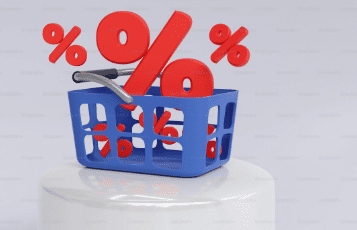Imagine you are walking into your favorite supermarket to pick up some snacks or some groceries. You see posters everywhere that have “Prices Dropped!” or “Down Down!” stuck on them. You immediately think to yourself, “Wow! Great deal! Right?” Well, surprisingly not everything is as it appears. Two of Australia’s two biggest supermarkets, Coles and Woolworths, are being taken to court by the Australian Competition and Consumer Commission (ACCC) over what they say is the presentation of “illusory discounts”. So, let’s dig into the story and find out what’s going on and why this matters to you.

What’s the Problem?
ACCC argues that Coles and Woolworths, by actually misleading customers on their “was/is” pricing strategies, make false pretenses. “Was/Is” is a form of pricing strategy wherein the stores offer a higher price or a “was” price then draw attention to a lower price or the “is” price in order to have the buyer understand that they are saving money. According to the ACCC, this practice is just a little deceptive and could easily mislead shoppers.
How Did All This Begin?
In its court filing, the ACCC claimed that Coles inflated the prices on certain best-selling items for a few weeks. For them to appear to offer even more discounts when those prices are cut, they are claimed to have increased the prices on certain best-selling items for just a few weeks. For example, they sold a pack of 16 Strepsils throat lozenges at $5.50 in most of 2021 and in the first half of 2022. However, for just 28 days, they hiked the price to $7. This was used as a way to tout a “sale” price of $6, which appeared to be a bargain, but later turned out to be $0.50 above the original price that would have been charged.
As the ACCC would explain, Coles was merely increasing price to make space for its new “was” price increase. This way, when it later cut the price, it gave the illusion to shoppers that it was slashing them thousands of dollars in value, even though it was really only making as much money as before. It is this type of conduct the ACCC considers to be “misleading representations.”
Taking a Closer Look at Coles’ Conduct
According to the ACCC, Coles has achieved this through more than 245 products. Mostly, these are items families purchase commonly: they are things like snacks and household goods. Some examples include well-known brands like Arnott’s Shapes Band-Aids, Bega cheese, Cadbury chocolates, Coca-Cola, Colgate toothpaste, and even Whiskas cat food.
Such fake discounts, ACCC complains are at a time when many families have long suffered under soaring costs of living. Discount made people want to buy more products assuming they are saving while the opposite of this is happening: if the pricing is not honest then the customer’s confusion and frustration ensue.
Woolworths Too in the Spotlight
But Woolworths isn’t off the hook either. They, like Woolies, face the same accusations from the ACCC. Woolworths allegedly marked up the prices of many items before claiming to have “dropped” them. For instance, they sold a 370g pack of Oreo cookies at $3.50 from January 2021 until November 2022. Then they jacked the price up to $5 for 22 days. They then returned the cookies to a “sale” price of $4.50, which was still higher than the original price.
The ACCC is also investigating about 266 products marketed by Woolworths, in a way that is too similar to ones another, including products like Arnott’s Tim Tams, Palmolive dishwashing liquid, and Raid insect spray.

Second Steps
Both Coles and Woolworths are prepared to take their battles to court. Coles stated they would fight the charges while Woolworths said they will evaluate the charges. The two supermarkets face hefty fines should the ACCC win the case. More importantly, they may do things differently in the future by changing how they post prices.
Why Should You Care?
You could ask, why is this important to you as a shopper? Well, when you go to the store, you want to know that you’re getting a fair deal. If companies use tricky pricing practices, it will confuse you and make you spend much more money than you would have if you had known.
Court cases like these teach one to be more cautious and do thorough research before considering buying for the right price. Next time when you come across these “sale” pages, take your time to deliberate about the original price. Is it really a good deal or a selling trick by the seller?


